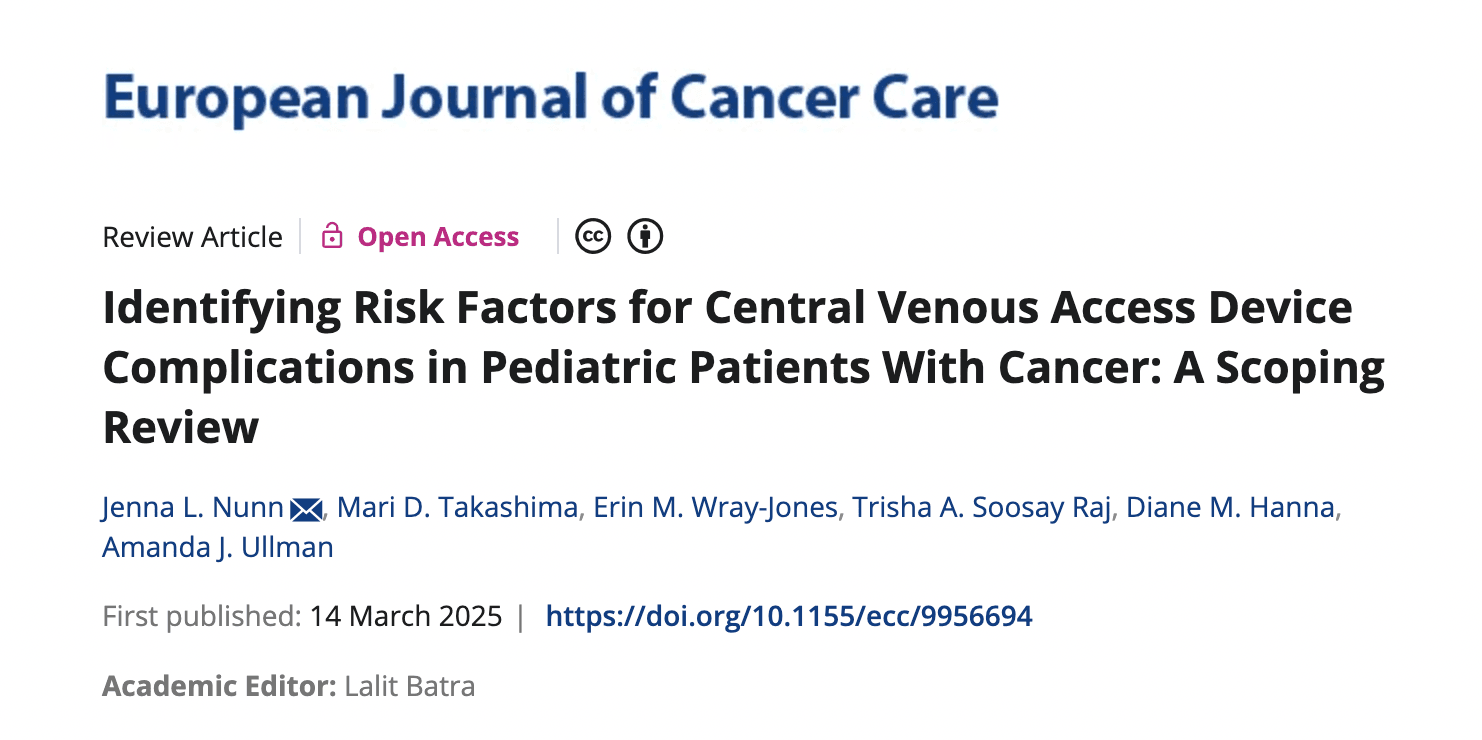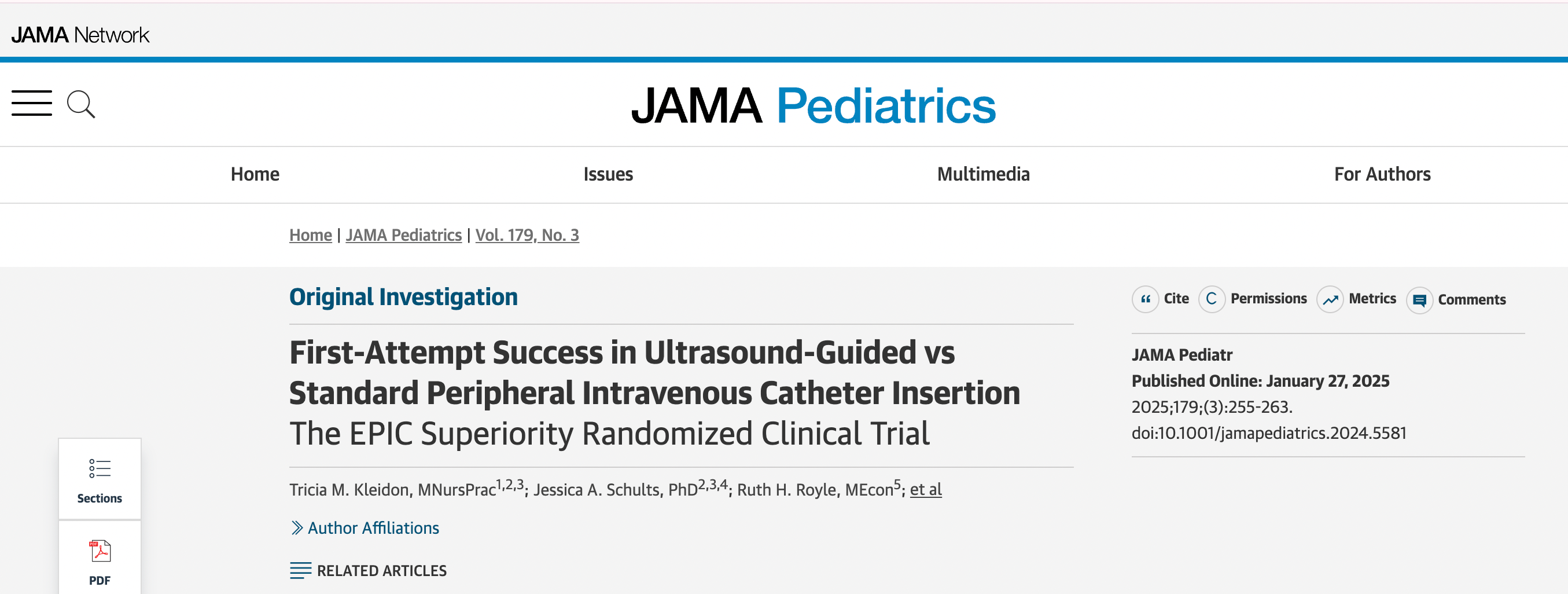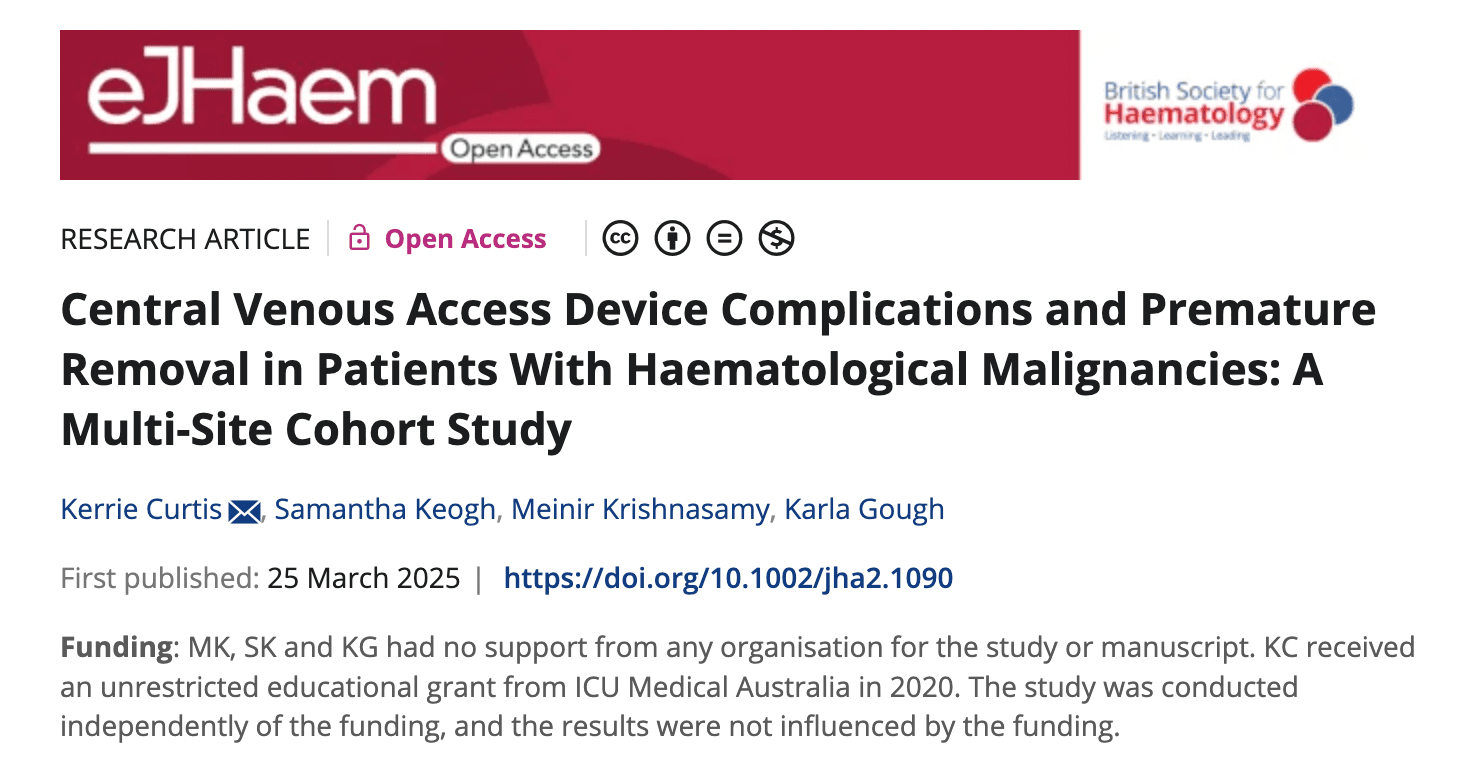Quality of Life Tools for VAD Patients: Is There a Gap?
Posted
on 27 August 2025
)
Vascular access devices (VADs) like PIVCs, midlines, and PICCs are vital for patient care, but their impact on quality of life (QoL) isn’t well understood. This scoping review explored existing research to determine whether validated tools exist to measure QoL specific to these devices.Study Overview
The review analyzed 21 studies involving adult patients with PIVCs, midlines, or PICCs, covering over two decades of research. The authors searched major databases without date restrictions, i...
The review analyzed 21 studies involving adult patients with PIVCs, midlines, or PICCs, covering over two decades of research. The authors searched major databases without date restrictions, i...
Call for Papers: Safety, Innovation, and Quality Improvement in Vascular Access
Posted
on 24 August 2025
Vascular access is vital in modern healthcare—but it remains a high-risk, high-cost procedure. Preventable harm, rapid technological change, and inconsistent practices continue to challenge clinicians worldwide.To drive progress, SAGE Open Nursing is launching a Special Collection on “Safety, Innovation, and Quality Improvement in Vascular Access.” We invite submissions that advance best practices, showcase innovation, and improve patient outcomes across diverse healthcare settings.Topi...
Prioritizing Interventions to Prevent CLABSI: Insights for Future Research
Posted
on 20 August 2025
)
Central line-associated bloodstream infections (CLABSIs) are among the most serious complications of central venous access devices (CVADs), causing harm to patients and burdening health systems. Despite multiple strategies for prevention, few are supported by strong randomized trial evidence. This study identified key priorities for testing in the upcoming IVCare adaptive platform trial.Study Overview
A prioritization exercise was conducted among 65 infection prevention clinicians attending ...
A prioritization exercise was conducted among 65 infection prevention clinicians attending ...
CVAD-Related Skin Injuries in Children With Cancer: A Scoping Review
Posted
on 13 August 2025
)
Central venous access devices (CVADs) are critical for delivering cancer treatment in children, but they can lead to skin injuries that cause pain, distress, and device failure. This scoping review aimed to synthesize existing evidence on the prevalence, types, and reporting of CVAD-related skin injuries in pediatric oncology patients.Study Overview
The review followed Whittemore and Knafl’s integrative methodology, screening 613 records and including 6 studies focusing on children aged 0/br>...
The review followed Whittemore and Knafl’s integrative methodology, screening 613 records and including 6 studies focusing on children aged 0/br>...
CVAD Complications in Pediatric Cancer: What We Know About the Risks
Posted
on 6 August 2025
)
Central venous access devices (CVADs) are essential for delivering treatment to children with cancer. However, they carry a significant risk of complications that can delay therapy and impact outcomes. This scoping review explored the existing evidence on risk factors for CVAD-associated complications in pediatric oncology patients.Study Overview
The review included 25 studies published between 2012–2022, covering over 10,000 patients across multiple regions. The focus was on identifying d...
The review included 25 studies published between 2012–2022, covering over 10,000 patients across multiple regions. The focus was on identifying d...
Improving Jugular CVC Dressing Integrity: Findings from the STICKY Trial
Posted
on 30 July 2025
)
Central venous catheters (CVCs) are essential in critical care, but their failure due to dressing disruption is a persistent issue—especially for jugular lines. The STICKY trial, a multicenter randomized controlled trial, examined whether adding a medical liquid adhesive (MLA) could improve dressing integrity for jugular CVCs in ICU patients.Study Overview
This trial involved 160 adult ICU patients with jugular CVCs across four Australian hospitals. Patients were randomized to standard dre...
This trial involved 160 adult ICU patients with jugular CVCs across four Australian hospitals. Patients were randomized to standard dre...
Ultrasound-Guided PIVC Insertion: A Superior Approach for Pediatric Patients
Posted
on 23 July 2025
)
Peripheral intravenous catheter (PIVC) insertion is often challenging in children, leading to multiple attempts, distress, and delayed care. The EPIC Superiority Randomized Clinical Trial investigated whether ultrasound guidance improves first-time PIVC success compared with standard palpation and visualization techniques in hospitalized children.Study Overview
This open-label, randomized trial was conducted at an Australian quaternary pediatric hospital between July 2021 and December 2022. ...
This open-label, randomized trial was conducted at an Australian quaternary pediatric hospital between July 2021 and December 2022. ...
CVAD Complications in Haematology Patients: A Call for Evidence-Based Practice
Posted
on 16 July 2025
)
Reliable central venous access is critical for patients with haematological malignancies undergoing intensive treatment. However, the risk of complications and premature catheter removal remains high in this population. This multi-site cohort study aimed to evaluate the performance and complication rates of central venous access devices (CVADs) across four major hospitals in Melbourne, Australia.Study Overview
The study included 1,078 CVADs inserted in 673 adult patients between September 20...
The study included 1,078 CVADs inserted in 673 adult patients between September 20...
Noradrenaline Use Through PIVCs: How Much Is Safe?
Posted
on 9 July 2025
)
Peripheral IV catheters (PIVCs) are sometimes used to deliver noradrenaline in emergency and ICU settings when central access is delayed. This study investigated the relationship between noradrenaline dose and phlebitis risk using a time-dependent model.Study Overview
Data from 1,351 ICU patients and 3,410 PIVCs across 22 Japanese hospitals was analyzed using a multilevel Cox regression model. The focus was to identify a safe dosage threshold for noradrenaline when administered through PIVCs...
Data from 1,351 ICU patients and 3,410 PIVCs across 22 Japanese hospitals was analyzed using a multilevel Cox regression model. The focus was to identify a safe dosage threshold for noradrenaline when administered through PIVCs...
Educating Haemodialysis Patients on Vascular Access Care
Posted
on 2 July 2025
)
Proper care of vascular access is critical to the success of long-term haemodialysis. This systematic review examined whether educational and behavioural interventions improve patients’ ability to manage their access and reduce complications.Study Overview
The review included seven studies involving 540 adult haemodialysis patients, evaluating the impact of nurse-led programs using videos, booklets, counselling, and demonstrations on self-care, confidence, and outcomes.Key FindingsMost stu...
The review included seven studies involving 540 adult haemodialysis patients, evaluating the impact of nurse-led programs using videos, booklets, counselling, and demonstrations on self-care, confidence, and outcomes.Key FindingsMost stu...








